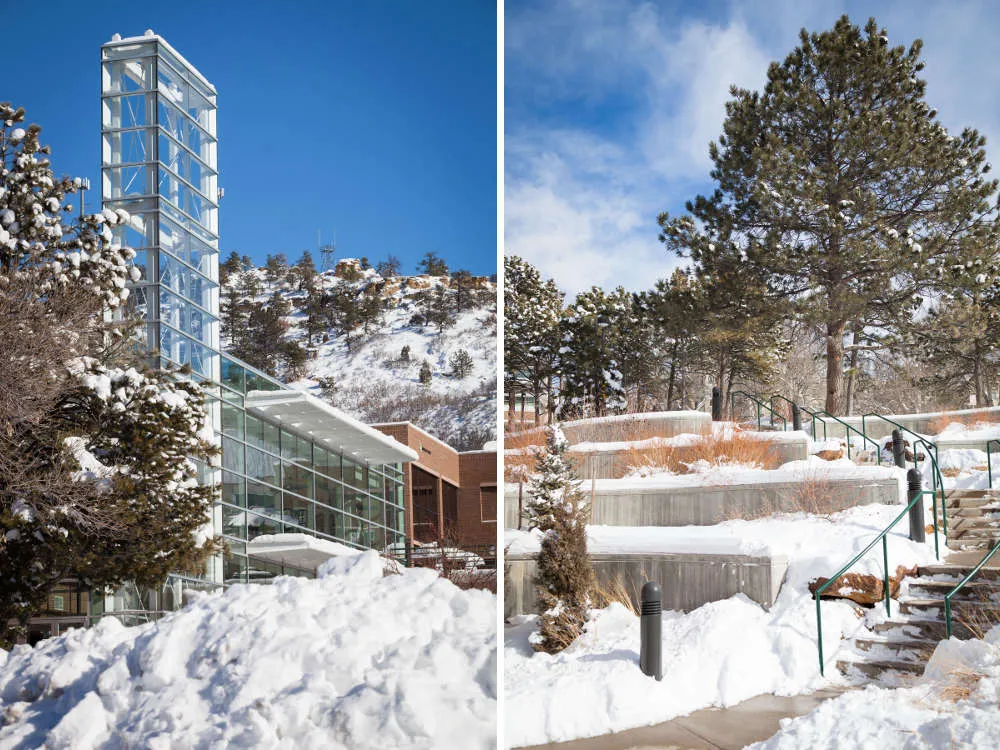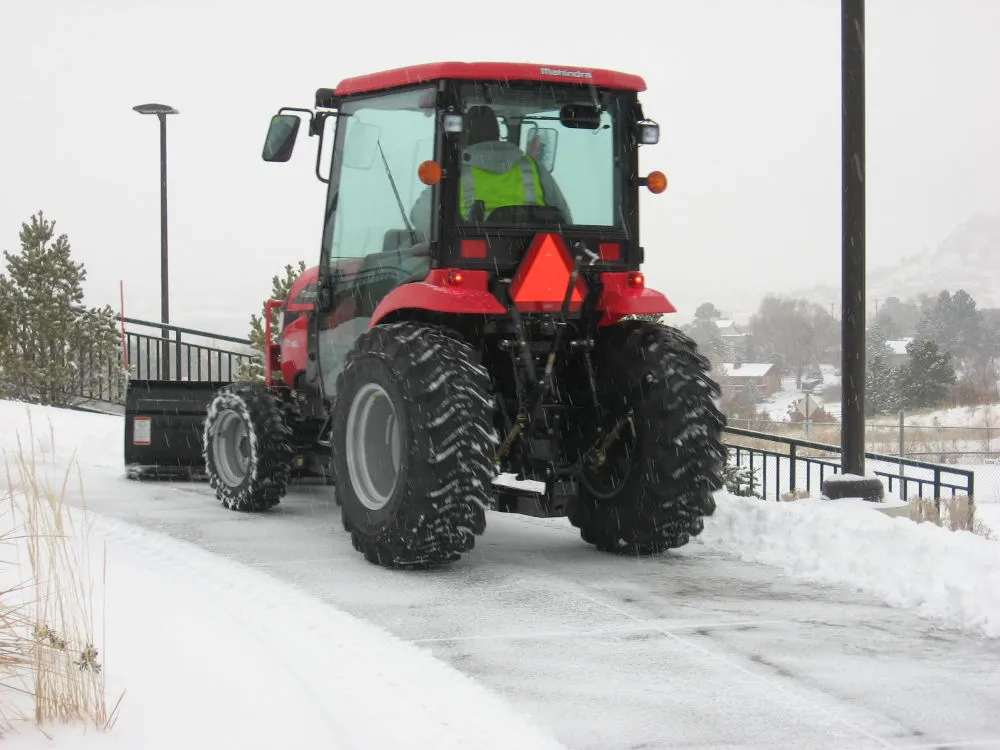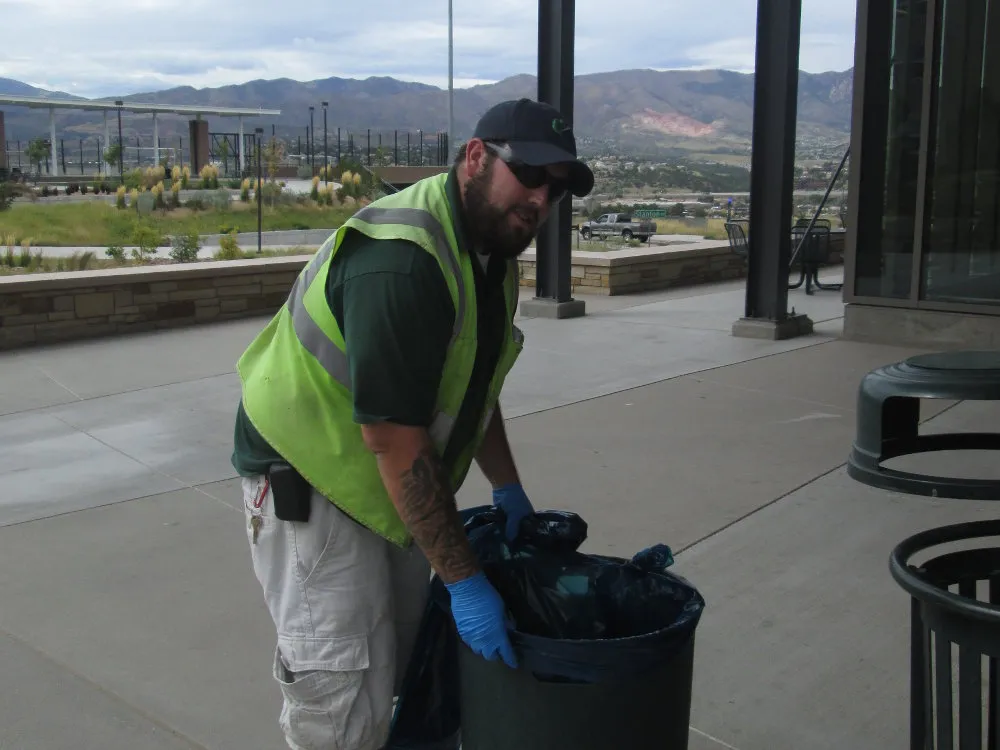
OUTDOOR SERVIES
ㅤ
About Us

The Outdoor Services Department is supervised by Rob McGann. Our Outdoor Services crew is always working on projects that will beautify our growing campus. They maintain the grounds of campus which includes tree pruning, turf maintenance, litter control, flower beds, outdoor trash cans and ashtrays, snow removal, irrigation maintenance, sign repair, landscape design.
Outdoor Services Provided:
- Turf maintenance
- Grounds maintenance
- Landscaping
- Exterior trash removal
- Snow removal
- Irrigation
- Sign repair
- Asphalt maintenance
Gardens/Planters

There are multiple garden and planter sites on campus. Garden sites are defined as a concentrated area of diverse plants at or slightly above grade, based on a designed planting, requiring regular maintenance/irrigation and replacement of plants to keep the design intact. Planters are enclosed raised structures which also require irrigation and regular replacement of plants. Gardens are filled with perennials, bulbs, groundcover and annuals for an ever-changing palette of color throughout the year. Areas around most buildings are planted with ground cover, grasses, bushes or evergreen bushes.
Gardens
- Columbine Hall Four winds sculpture
- El Pomar Center plaza
- Circular Bed at Main Hall
- Regent Circle Entrance and roundabout
- Meadow Entrance roundabout
- Demonstration Garden behind Centennial Hall
- Science & Engineering Building
Planters
- Columbine Hall
- El Pomar Center plaza
- University Center upper and lower plaza
- Alpine Village
- Department of Public Safety
Plant Select
UCCS is now a member of Plant Select ®. The purpose of Plant Select is to seek out, identify and distribute the very best plants for Colorado landscapes. Being a member offers us more opportunities to educate students, faculty, staff, and the community about plants that thrive in local landscapes.
Click to see Landscape Guidelines
UCCS has a varied micro-culture within Colorado Springs. We have the native bluffs climate surrounding campus but we also have a more cultivated climate within campus between buildings and in open spaces.
Native Landscaping

Thanks to the bluffs, roughly 60% of the UCCS campus is native landscaping. This is defined as native plant life allowed to grow pretty much unassisted and unchecked. UCCS encourages native landscaping to be used as much as possible when designing and constructing on campus. Native landscaping saves water, gas, and time as it does not require weekly maintenance. These areas also enhance UCCS's unique image and dedication to living in cooperation with our unique environment.
Native areas are very delicate as the plants have to struggle for every resource, the most important being water. Therefore, it is important to stay on designated paths and maintain trash vigilance in these areas, as even one person walking through a field can cause irreparable damage to the delicate plants, leading to erosion and the formation of deep gullies.
Tree Management
UCCS has a diverse forest of trees including both coniferous and deciduos trees. There are many mature trees dating back decades as well as numerous young trees planted as part of the many campus construction projects and as replacement to dying or diseased trees.
Trees on campus are assessed throughout the year to determine health, placement, and design viability. To assist with their over all health, trees are pruned and treated for diseases. Generally, if a tree is removed due to age or disease it is replaced during the next planting cycle, funding permitted. If there are changes to the requirements of the area where the tree once was, due to construction or design parameters, something other than a replacement tree may be substituted including a different species of tree, landscaping or a building or road.
Every effort is made to keep all the trees on campus in good health as well as increase the number and variety of trees on campus. During construction projects every tree impacted by the construction is evaluated for health and suitability to the project. If possible the tree is either preserved or moved to a new location on campus. If a tree is not able to be moved due to health or size the tree is removed. Over 50 new trees were planted during the growing season 2005.
Goals for Tree Management
- To preserve as many of the campus trees as possible
- To increase the variety of trees on campus
- To plant trees with the best chance of surviving our unique climate
- To increase the number of trees on campus in general and in hot zones specifically (hot zones are determined by the landscape committee, campus architect and campus Master Gardner)
Keeping Our Campus Clean and Safe
- Pick up trash as you walk across campus.
- Stay on designated paths to avoid killing delicate new growth.
- Volunteer for planting projects-roundabout, sponsored planters. Contact Rob McGann, Outdoor Services Supervisor for project opportunities.
- Contact Facilities at x3313 for outdoor service issues like:
- there is a sprinkler leaking or run amok
- excessive trash
- snow or ice block
- join landscape committee